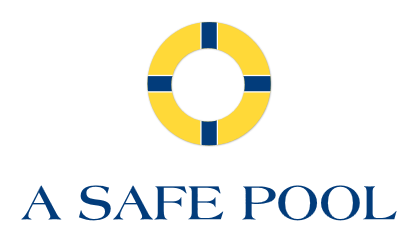If you’re a pool owner, lifeguard certification can help you make sure your Friends and family are safer in your pool. Even if you’re not planning to join Baywatch, the lifeguard course is designed around intensive training in water safety, rescue, and emergency response. For pool owners, this can mean understanding how to better avoid dangerous situations and what to do if they occur anyway. Getting certified is a smart choice as part of an overall pool safety system.
What Lifeguard Certification Is
While both swimming lessons and CPR/first aid classes are great to have as a pool owner, lifeguard classes go beyond those skills. The curriculum is designed by the American Red Cross Scientific Advisory Council and taught by experts and professionals who have dedicated themselves to water safety and emergency response. Available in both a traditional and blended format, it offers both knowledge and hands-on skill-building to help you become comfortable with the skills you need to take charge if there’s a swimmer in distress, accidental drowning, or other water emergencies.
This includes how to identify water emergencies and enter the water quickly and properly to allow you to get to the swimmer. You’ll have to pass a swimming skills test that ensures you are a strong swimmer who’s able to move confidently in the water with enough power to rescue someone. During your lifeguard certification, you’ll need to prove you know the proper way to rescue a swimmer and bring them back to dry ground, and once there address any injuries or stabilize the victim until emergency services can respond. It requires a high level of skill, because the training can, quite literally, mean the difference between life and death.
Requirements For Lifeguard Training
It’s important to note that while the American Red Cross may be one of the most well-known lifeguard course providers, they aren’t the only certifying body available. Other organizations, such as the American Lifeguard Association, have their own programs that are very similar but can vary slightly in both requirements and skills testing. Always refer to the information from your chosen certifying body when determining if you’re ready to obtain your lifeguard certification through them.
Select the type of lifeguard classes that are right for you:
- Aquatic Attraction – This is designed primarily for employees of water parks or other attractions with very shallow water of 3-feet or less.
- Shallow Water – This designation is appropriate when dealing with water no more than 5-feet deep.
- Lifeguard – Full lifeguard classes are designed to teach the skills necessary for both deep and shallow water pools.
In order to take lifeguard classes, you must meet the following requirements:
- Minimum Age – In order to get your lifeguard certification from the Red Cross, you must be 15 or older before the last day of classes.
- Swimming Skills Test – You must already be a strong swimmer to take lifeguard courses. In order to prove you possess the technique, stamina, and strength to save lives, you must do the following:
- Tread water for 2 minutes using only your legs
- Swim 100 yards in a front crawl
- Swim 50 yards each in the front crawl with head up, sidestroke, breaststroke, breaststroke with head up, and the elementary backstroke kick with hands on your chest
- Dive to a specified depth, retrieving a weight and return
Once you’ve begun your class, your instructors or the digital training resources (if you’ve chosen a blended class) will work with you on building the knowledge base you need to get your lifeguard certification. You will learn:
- The proper techniques working alone or assisting another lifeguard in water rescue under a variety of circumstances.
- Swimmer in distress on surface
- Submerged swimmers in distress
- Potentially injured swimmers requiring stabilization on a backboard
- Rescuing both active and passive swimmers
- Rescuing multiple swimmers
- How to care for common swimming injuries.
- Spinal injuries, such as neck compression or an impact to their back.
- Head injuries
- Limb injuries
- Common Life-Saving Scenarios
- Infant, child, and adult CPR
- Use of an automated external defibrillator
- Assessing injured victims
- First aid for minor injuries
- Trauma stabilization until emergency services arrive
After the classroom or computer training, lifeguard certification students are evaluated in a hands-on skills assessment by their instructors in person. They will need to demonstrate good judgment in evaluating situations, applying the skills they’ve learned, and establishing their proficiency.
Preparing To Use Your Certification
While you may hope never to need the skills you learned in your lifeguard course, you can’t count on accidents never happening. To make sure that you’re ready, you’ll want to evaluate your pool area so you know you have the tools you need.
- Ensure that you have the rescue flotation devices, grab poles, and emergency equipment you need to help a distressed swimmer. You’ll also want to make sure these safety features are clearly marked so other swimmers can find them easily.
- Maintain a well-stocked first aid kit. All its components should be in date and ready for use. This can include not only bandages, splints, and gauze, but resuscitation masks and other interventions.
- Practice your lifeguard certification techniques regularly. This can include drills with weights in the water or you can get a swimmer to partner with you as a “rescue”.
Make Your Pool Safer
Getting your certification ensures that if an emergency happens while you’re around, you will be ready to step in. By making sure you have pool safety fences and safety covers in place, you can lessen the risk of accidental drowning due to unsupervised access. Our specialists can help you design the safety features that give you a safer pool that is still beautiful. Contact A Safe Pool today.

